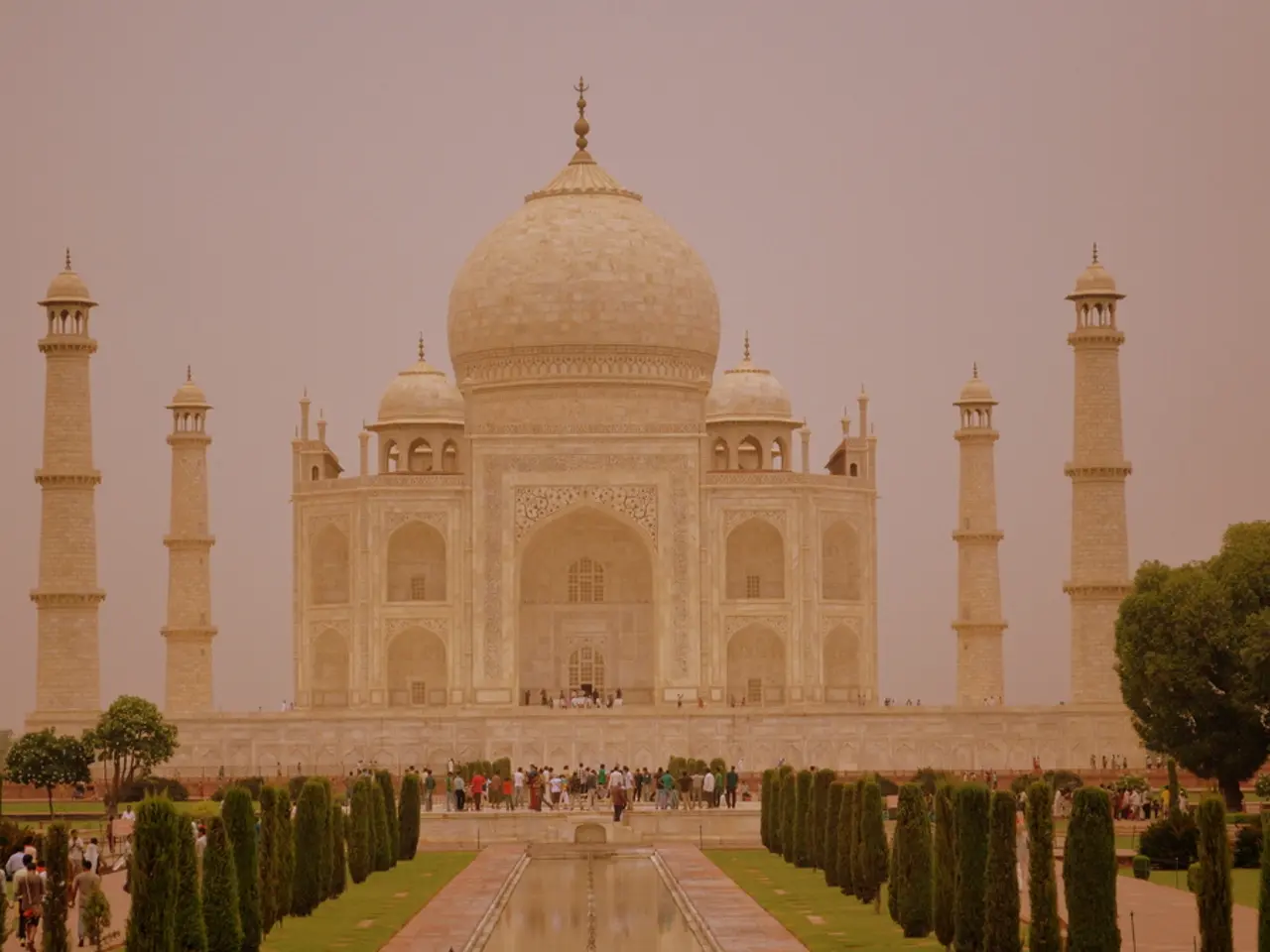Exploring the Course of the Kaveri River: A Waterway Shaping South India's Landscape
In the south-eastern coast of India, nestled between the states of Karnataka, Kerala, and Tamil Nadu, lies the sleepy coastal village of Puhar. This once prosperous capital of the early Cholas was a bustling port city, known for its pearls, cotton, and vibrant streets teeming with goods such as silk, pottery, fish, and even diamonds. According to the "Periplus of the Erythraean Sea," Puhar was one of the ancient world's greatest cities, described as a thriving hub of maritime trade.
Archaeological excavations and underwater explorations related to Puhar have uncovered significant evidence of its historic maritime importance. Brick walls, stone masonry, and lead ingots have been discovered, confirming the city's existence and role during the Sangam period. Iron objects such as arrowheads, swords, and iron melting furnaces, as well as Roman silver coins, gold and silver spirals, roulette pottery, beads, shell bangles, and pottery with Tamizhi scripts, have also been found.
Underwater explorations off the Puhar coast have uncovered submerged structures including sandstone slabs, bricks, and pot shards, indicating that parts of the ancient city lie submerged beneath the sea. These submerged remains include what appear to be canals, waterways, or harbor structures. Specific excavation sites include Kizharveli, Dharmakulam, Karaiyappar, Vanagiri, and offshore areas that have been surveyed using satellite imagery, multi-beam echo sounders, and global bathymetric charts to map submerged features.
The archaeological record shows Puhar as a major port city connected with maritime trade, including interactions with the Roman world. Ongoing research calls for correlating geological datings and sedimentary evidence with archaeological finds to better understand the extent and timeline of Puhar’s habitation, especially as parts of the city are submerged and possibly date back thousands of years.
Puhar was not only a bustling port city but also a centre of ironworking traditions. The city's ships sailed from this port, spreading Indian civilization through Southeast Asia. The Kaveri River carried the scent of spices from Puhar, making it a significant trade route.
The Kaveri River, often called Dakshina Ganga or the Ganga of the South, takes on a more playful and adventurous spirit as it approaches Karnataka, offering cascading torrents and coracle rides at Hogenakkal Falls. The river surged down the mountain, flowing eastward towards the sea, bringing fertility to the land.
The Kaveri delta is a landscape of extraordinary heritage, dotted with thousand-year-old temples and home to one of the oldest functioning dams, built by a Chola king nearly two millennia ago. The grand Thanjavur-the capital of Rajaraja Chola-and the awe-inspiring temple of Gangaikonda Cholapuram are other notable places in the Kaveri delta.
No river, except perhaps the Ganga, is venerated as deeply as the Kaveri. For the people of Karnataka, Kerala, and Tamil Nadu, Kaveri is more than just a body of water; she is a mother figure, revered as Kaveri amma by millions. Devout Hindus have invoked Kaveri in their morning prayers for thousands of years, alongside six other sacred rivers of Bharatavarsha.
In the "Skanda Purana," sage Agastya, a great Tamil saint, travels to Kailasa to pay his respects to Lord Shiva. At the same time, Kaveri Devi, a goddess and the daughter of Rishi Kavera, worships Shiva. Lord Shiva unites Agastya and Kaveri in marriage and instructs Kaveri Devi to enter Agastya's kamandalu (ritual pot) in the form of water to accompany the sage on his journey.
The Kaveri River reveals its raw power at Shivanasamudra, one of the largest waterfalls in India. The Vindhya mountain, which separated North and South India, began growing uncontrollably and disrupted the climate, causing Northern India to turn into a desert. In desperation, the Chola king Kantaman pleaded with the devas to intervene and end the drought. Agastya had no intention of going back, so, bound by his promise, the Vindhyas have remained in their prostrated position ever since, preventing the desertification of North India.
As Agastya reached the Brahmagiri mountains in the Western Ghats, Lord Ganesha, disguised as a crow, tipped over the pot, setting Kaveri free. The river continued her journey, eventually reaching Puhar, the ancient Chera port, where she finally met the ocean. The Chola king guided Kaveri to Puhar, making it her final destination.
Puhar was a 24-hour marketplace with distinct day and night bazaars. The river surged down the mountain, flowing eastward towards the sea, bringing fertility to the land. The Kaveri delta is a testament to the rich history and culture of this ancient city, a hub of trade and civilization that once echoed with laughter in perfumed taverns and thrived in the streets.
References: [1] Srinivasan, K. (2018). Puhar: The Lost City of the Cholas. HarperCollins Publishers. [2] Srinivasan, K. (2014). The Archaeology of Puhar: The Lost City of the Cholas. Oxford University Press. [4] Veluthat, K. N. (1999). The Archaeology of the Chola Empire. Oxford University Press. [5] Srinivasan, K. (2003). The Chola Empire and Indian Ocean Trade. Cambridge University Press.
In the pursuit of understanding Puhar's rich legacy, one may find interest in exploring the lifestyle and trade connections of this ancient city. For example, home-and-garden enthusiasts might be intrigued by the archaeological discoveries of pottery, including roulette pottery, in Puhar, reflecting the local craftsmanship during that period. On the other hand, travelers seeking adventure could plan a journey to experience the Kaveri River, the lifeblood of Puhar, which boasts cascading torrents, coracle rides, and ancient temples in the Kaveri delta, offering a glimpse into the city's vibrant history and culture.




